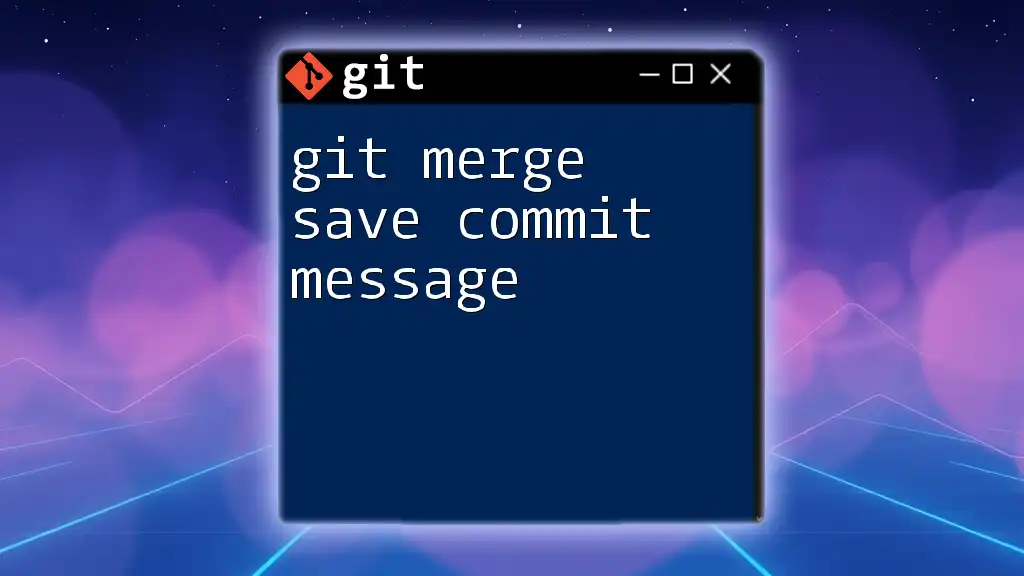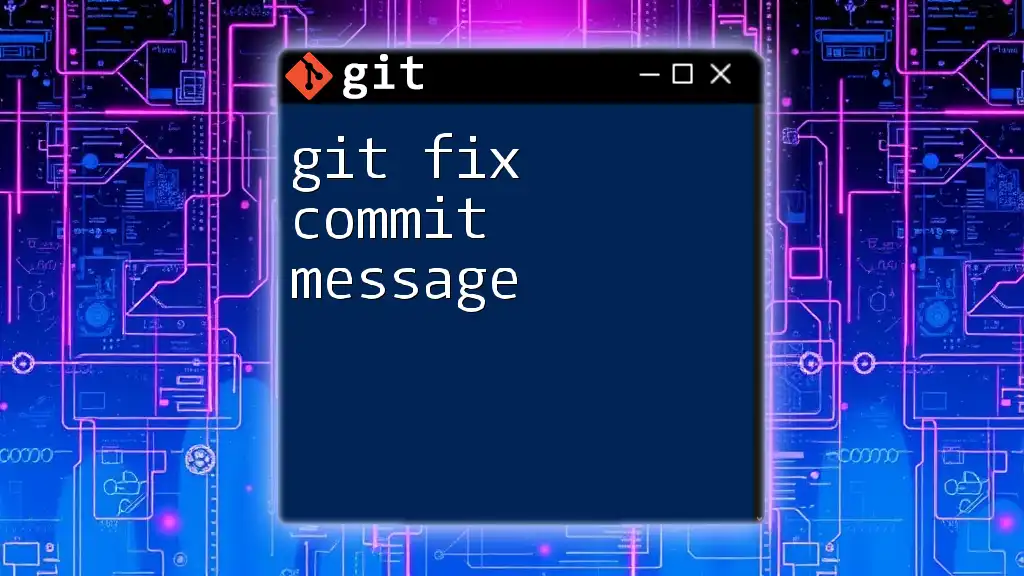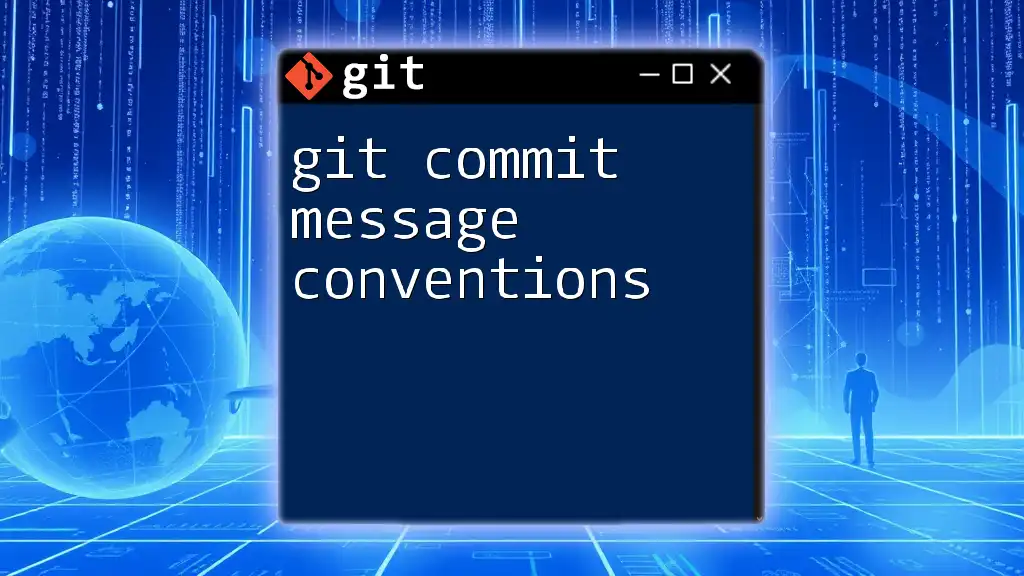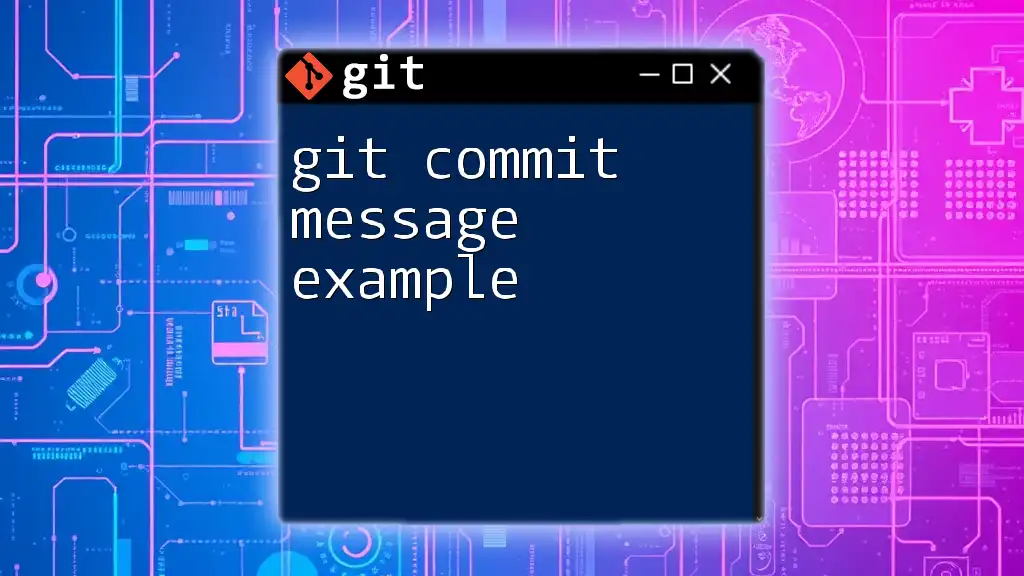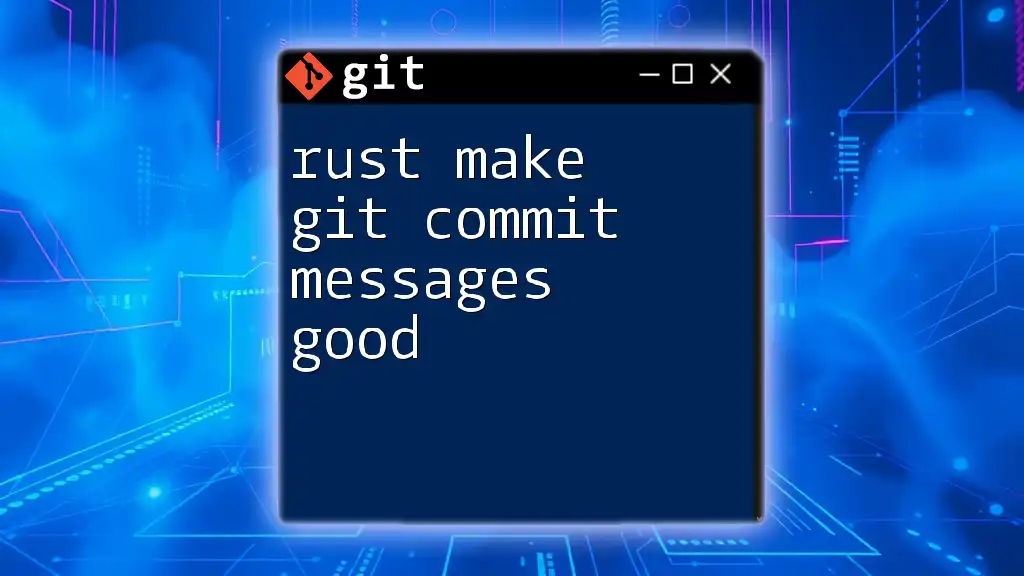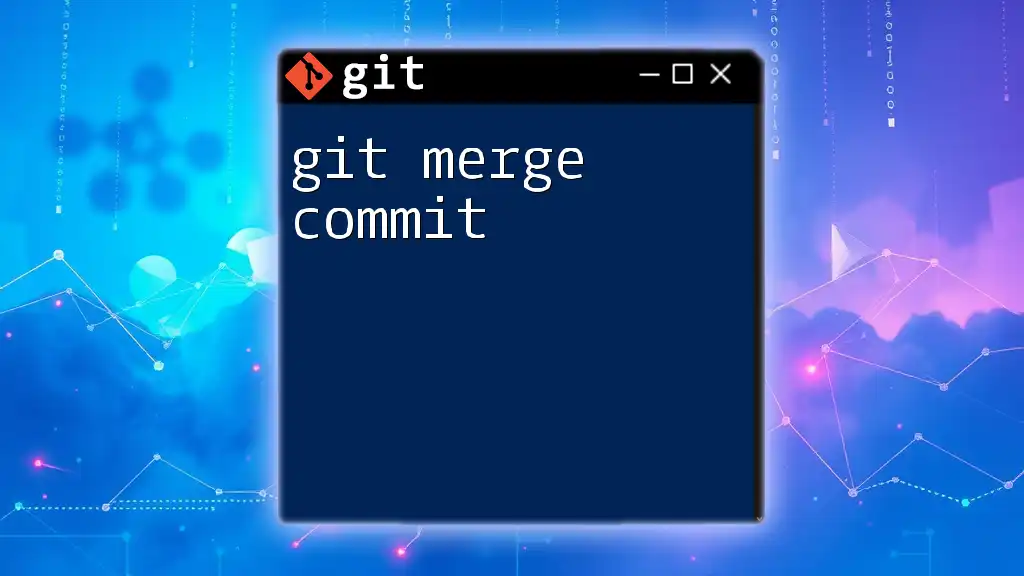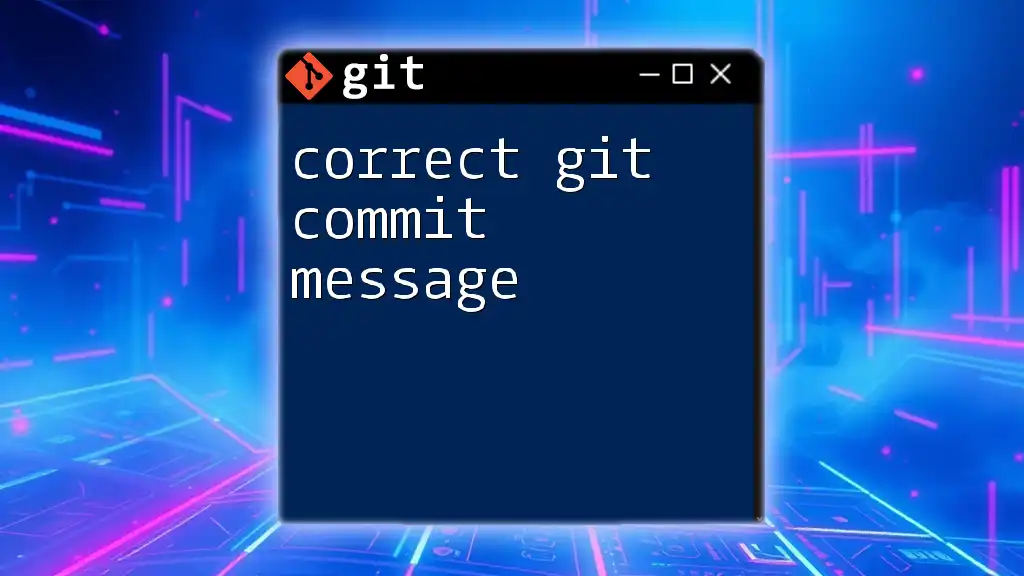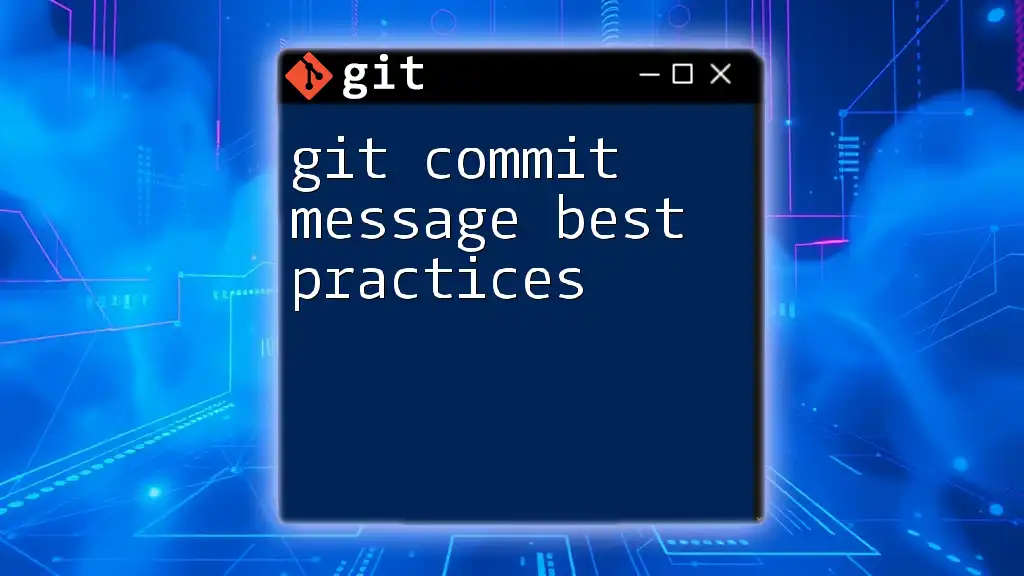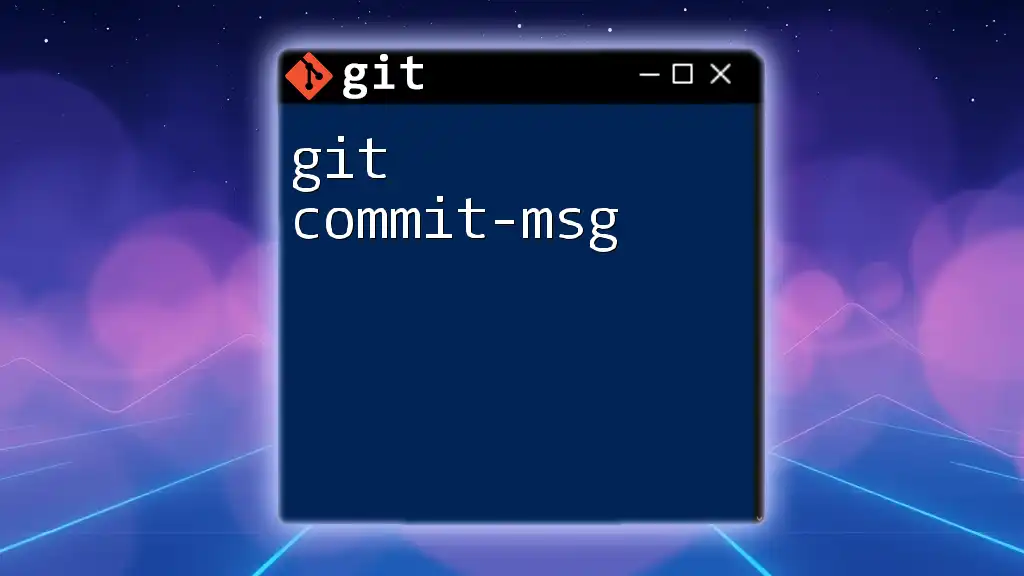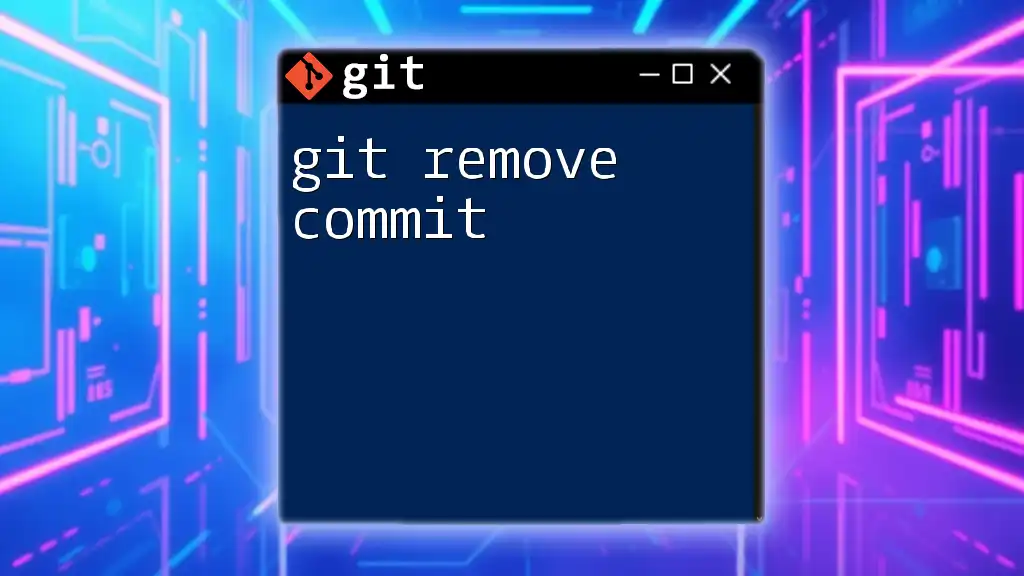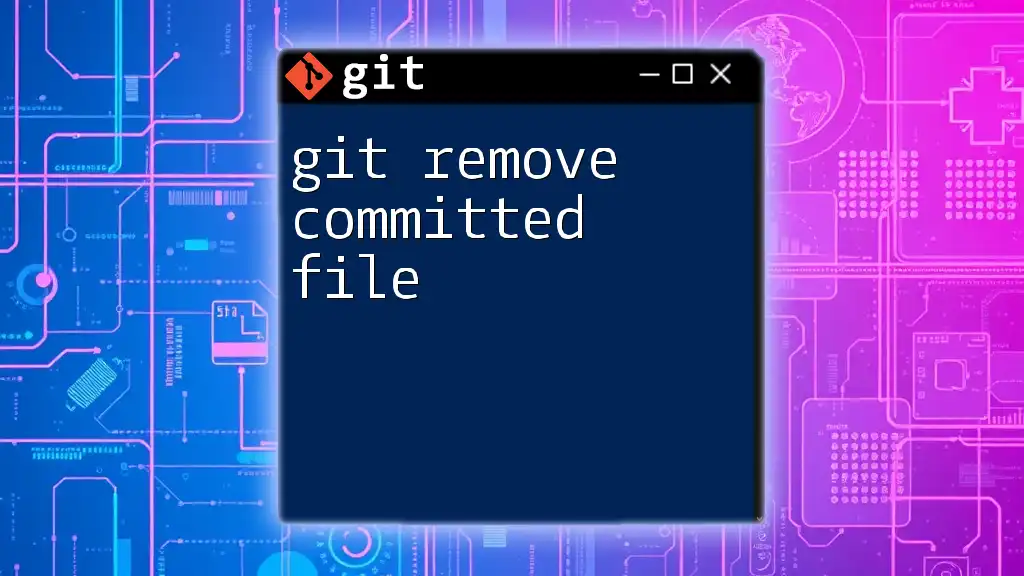When merging branches in Git, you can save a commit message using the `-m` option followed by your message to describe the changes made during the merge.
git merge feature-branch -m "Merged feature-branch into main"
Understanding Git Merge
What is Git Merge?
Git merge is the process of integrating changes from one branch into another branch. When working on a collaborative project with multiple contributors, merging is essential to ensure that everyone's changes are brought together seamlessly. It combines the development from one branch (the source branch) into another (the target branch) to create a consolidated version of the project.
Types of Git Merges
Understanding how Git performs merges is crucial for effective version control.
Fast-Forward Merge
A fast-forward merge occurs when there is a straight path from the current branch head to the target branch. Since no divergent changes exist, Git simply moves the pointer of the current branch to the target's latest commit.
git checkout main
git merge development # If main is directly behind development
Three-Way Merge
In contrast, a three-way merge is necessary when both branches have diverged. Git identifies the common ancestor and creates a new commit that incorporates changes from both branches.
git checkout main
git merge feature-branch # If both branches have commits
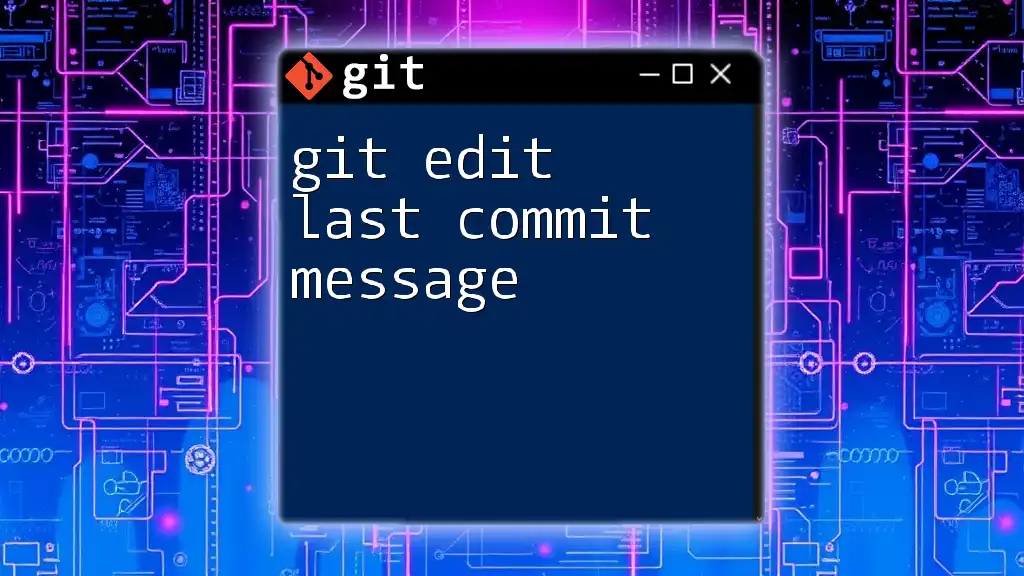
The Importance of Commit Messages
Why Commit Messages Matter
Commit messages serve as a historical record of changes and decisions made throughout the project's lifecycle. Clear and informative commit messages provide contextual information for future contributors, helping them understand the purpose behind changes without needing to look deep into the code.
Best Practices for Writing Commit Messages
To maximize the value of your commit messages, consider these best practices:
- Use the imperative mood: This means writing messages as if you're giving a command. For example, use `"Add new feature"` instead of `"Added new feature"`.
- Be concise but descriptive: Keep your messages brief yet informative. Aim for clarity; avoid vague terms like "fixed stuff".
- Reference issues and pull requests: If your commit resolves a specific issue, make sure to mention it, such as “Fixes #42”. This creates direct links between your code and the corresponding issue in your project management tool.
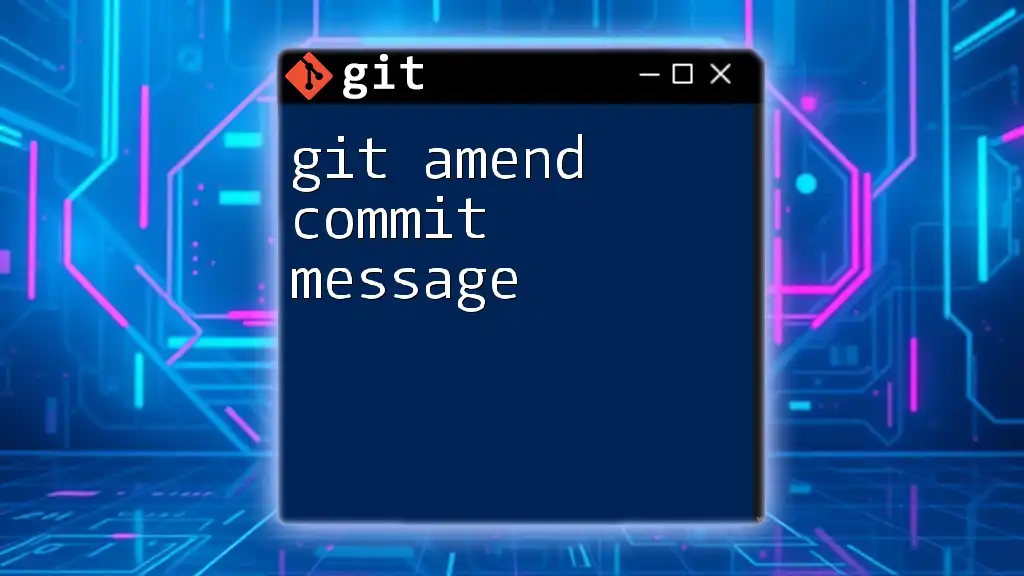
Merging with Commit Messages
Starting the Merge Process
To initiate a merge, you must first ensure that your target branch (from which the merge will occur) is checked out. This can be done easily with the following commands.
git checkout main # Switch to the target branch
git merge development # Merge development into main
Saving a Commit Message During Merge
Automatic Commit Messages
When you perform a merge without specifying a message, Git generates a default commit message automatically. It usually includes the branches that are being merged.
For example, after merging:
Merge branch 'development'
This default message may not provide enough context for anyone looking through the project's history.
Customizing Commit Messages
To personalize your commit message during the merge process, you can use the `-m` flag along with `git commit` to provide a specific message. Here's how to do it:
git merge development # First, merge
git commit -m "Merge development into main for new features" # Custom message
Example Scenario
Scenario Overview
Consider a project where you have a `main` branch representing the stable version and a `development` branch for new features. As developers implement changes in the `development` branch, you'll want to merge these changes back into `main` to ensure the main codebase reflects the latest improvements.
Step-by-step Process
-
Check out the main branch:
git checkout main -
Merge the development branch:
git merge development -
View the default commit message: After executing the merge command without a custom message, Git will generate a default message. You can view this message or proceed to customize it.
-
Customize and save the message: To create a more informative commit message, use the following command:
git commit --edit -m "Merge development into main adding multiple new features and fixes"
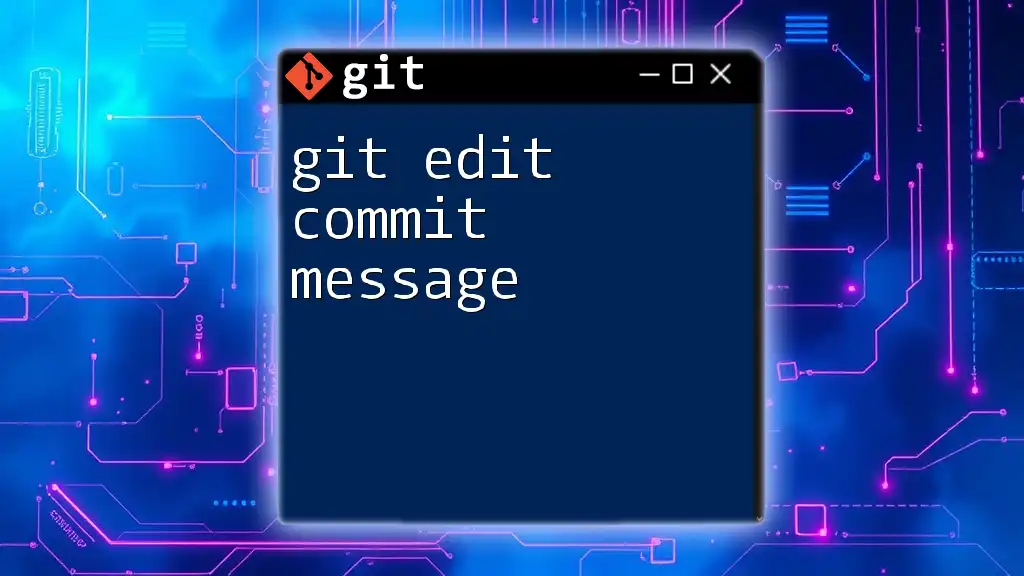
Handling Merge Conflicts
What are Merge Conflicts?
Merge conflicts arise when the changes in the merging branches cannot be automatically reconciled by Git. This situation typically occurs when two developers have edited the same line of code or made conflicting changes in the same file.
Resolving Merge Conflicts
Upon encountering a merge conflict, Git will alert you and mark the files that need to be resolved. Here’s how to handle them effectively:
-
Identify the conflicts: Use `git status` to see which files are in conflict.
-
Edit the conflicting files: Open the files and review the changes. You will see conflict markers that indicate what has been modified in each branch. Look for sections like:
<<<<<<< HEAD (your changes) ======= (changes from the other branch) >>>>>>> other-branch -
Resolve the conflicts: Remove the conflict markers and choose which code to keep, or combine changes as needed.
-
Stage the resolved files: After resolving conflicts, add the files to the staging area.
git add <resolved-file> -
Complete the merge: Finally, commit the resolved changes with a clear message.
git commit -m "Resolved conflicts between main and development"
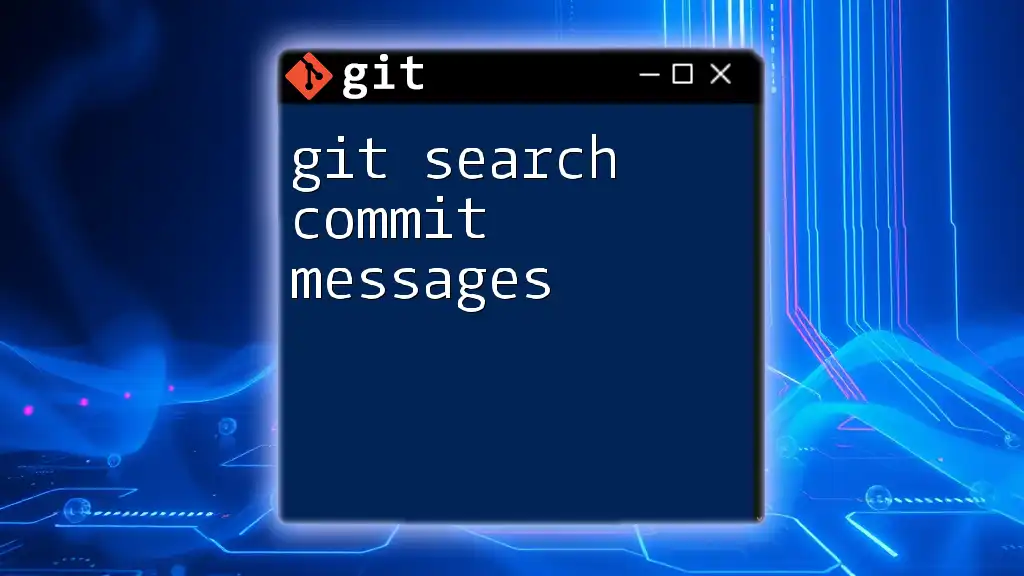
Conclusion
Integrating changes using git merge and writing clear commit messages are essential practices for any team using Git. By understanding how merges work and applying best practices for commit messages, you contribute to a well-maintained project history and enhance collaboration within your team. Always strive for clarity when documenting your changes to foster a smoother workflow for everyone involved.
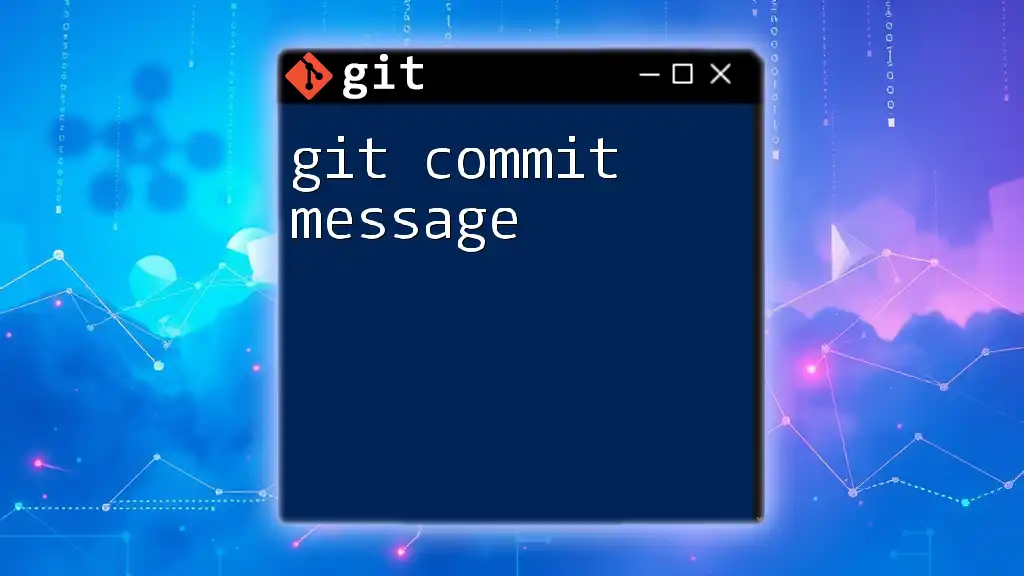
Additional Resources
For further reading, refer to the [official Git documentation](https://git-scm.com/doc) to delve deeper into Git's capabilities. Explore tools that help manage Git workflows, such as Git GUIs and visual diff tools, and consider literature on collaborative practices in software development to optimize your process.
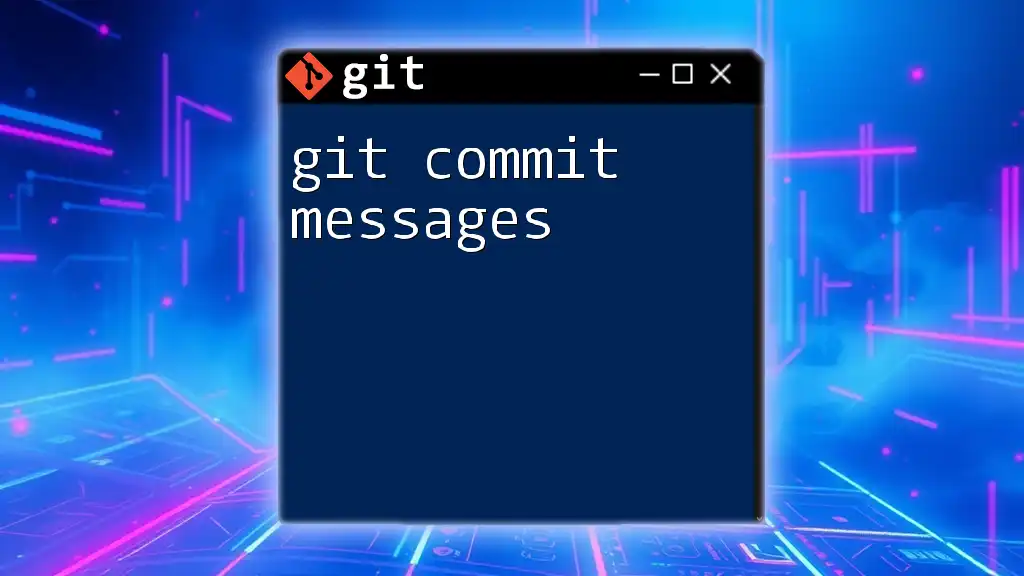
Call to Action
We encourage you to share your experiences with Git merges and commit messages in the comments below. If you found this article helpful, feel free to share it with your fellow developers to promote effective Git practices!

